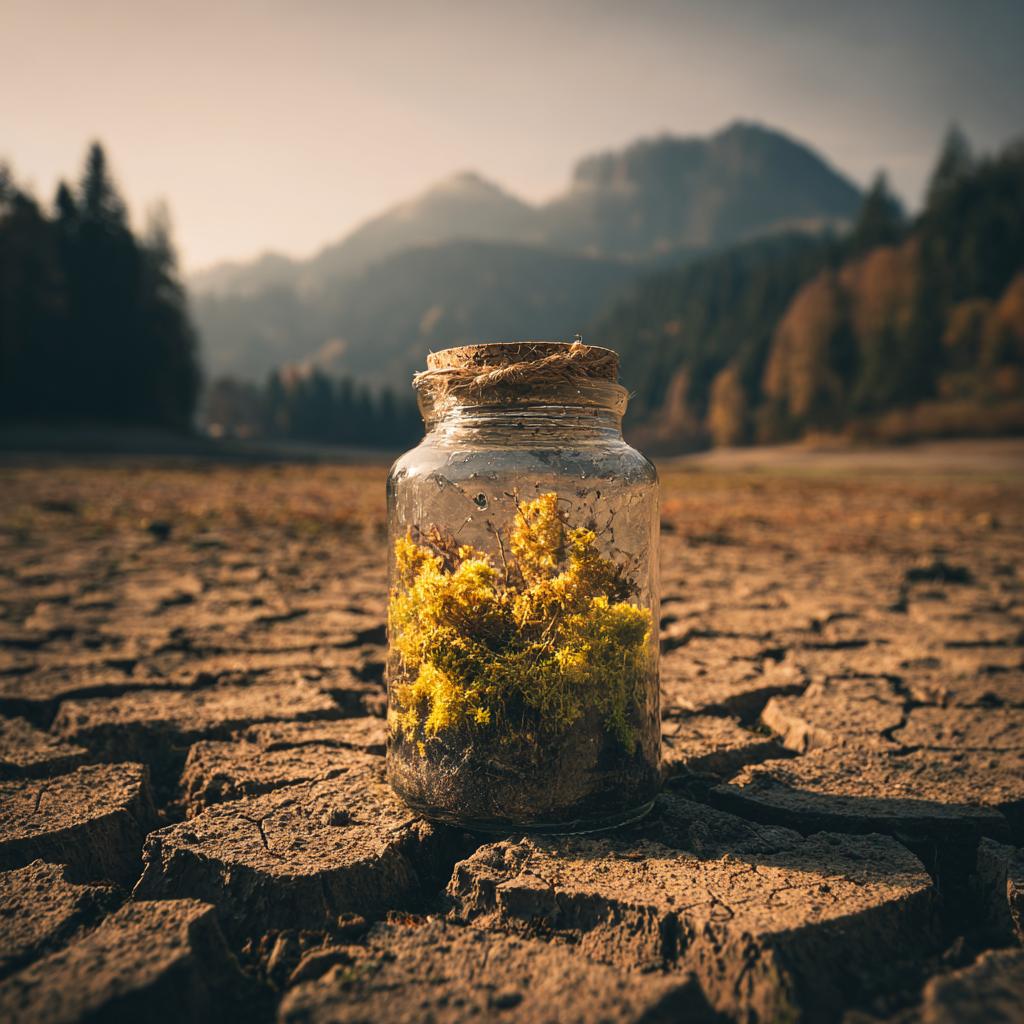Unfortunately, all the moss you find for sale in the country, and for the most part, the world, is foraged moss. This is due to simply not being able to grow moss on a large enough scale, in a fast enough time to make it feasible.
During the longer summer months, moss goes dormant. You can read more of the science behind this below.
This does mean that the availability of moss to the public does wane during summer. Don't get me wrong, there is moss out there to be got but it is dormant, and it is serving an important ecological function at this time.
For us personally, it's out of the question to forage moss from natural areas because of two reasons:
- Doing so will result in the soil eroding due to being exposed to the sun for too long which would otherwise be protected by the carpet of moss and other debris.
- Nobody wants dry yellow moss!
This results in the supply of moss being slowed right down, sometimes to a very brief but complete halt.
However, we try to anticipate this by sustainably foraging and outsourcing a little bit more than usual in order to store it through the hotter months in a climate controlled situation here at Koda, though sometimes we just can't predict what will happen. To add to that, we've seen the moss and terrarium industry boom in the last few years which has presented many challenges and questions in regards to supply, demand, ethics and sustainability.
Alas! We have something in the works that we think will be a great solution to this so watch this space.
Want to know more about moss dormancy?
Keep reading...
Mosses are a unique group of plants that have adapted to survive in a wide range of environments. Unlike most plants, mosses do not have true roots, stems, or leaves. Instead, they have simple, leaf-like structures called phylloids that are used for photosynthesis and reproduction. Mosses also do not have a traditional vascular system, which means they do not have specialized tissues to transport water and nutrients throughout the plant.
One of the ways mosses survive in adverse conditions is through a process called dormancy. Dormancy is a state of reduced metabolic activity that allows mosses to survive in adverse conditions, such as periods of drought or extreme temperatures. One of the most common times for mosses to enter into a dormant state is during the summer months. As temperatures rise and humidity decreases, mosses will often stop growing and enter into a dormant state. This allows them to conserve energy and survive until conditions improve.
There are a few different ways that mosses enter into dormancy during the summer. One of the most common is through desiccation, which is the loss of water from the moss. As the humidity decreases and temperatures rise, mosses will lose water through transpiration, which is the process of water loss through the leaves. As the moss loses water, it will shrink and become less green. This is a sign that the moss is entering into a dormant state.
Another way that mosses enter into dormancy during the summer is through a process called photoperiodism. Photoperiodism is the response of plants to the length of daylight. Mosses are sensitive to changes in the length of daylight and will enter into a dormant state when the days become longer.
Once the conditions improve, mosses will come out of their dormant state and begin to grow again. This can happen when temperatures cool down and humidity increases, or when the days become shorter and the moss senses a change in photoperiod. Understanding the dormancy behaviour of moss can help us in managing and preserving moss habitats in the wild and in our terrariums and vivariums!


0 comments